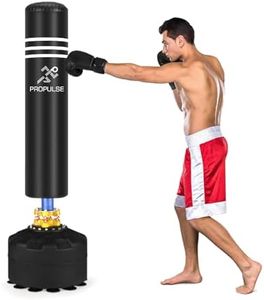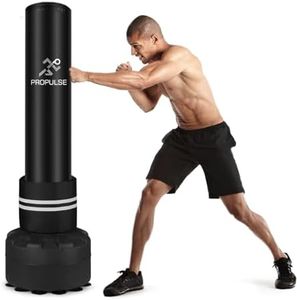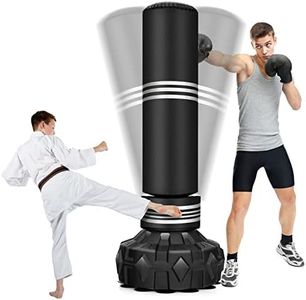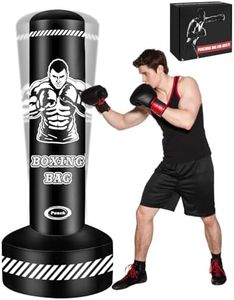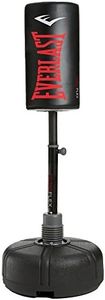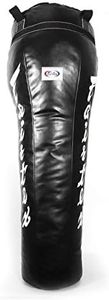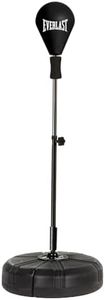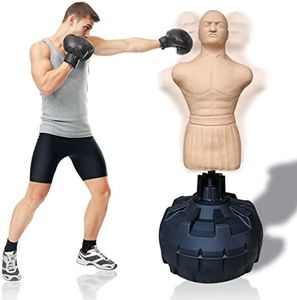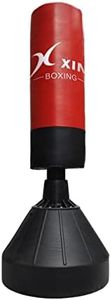We Use CookiesWe use cookies to enhance the security, performance,
functionality and for analytical and promotional activities. By continuing to browse this site you
are agreeing to our privacy policy
10 Best Punching Bag For Beginners
From leading brands and best sellers available on the web.Buying Guide for the Best Punching Bag For Beginners
Choosing your first punching bag is an exciting step, whether you’re looking to get fit, learn self-defense, or relieve some stress. Since there are plenty of types and features available, the right choice depends on your goals, space, and comfort. By focusing on a few key features and understanding how they relate to your needs, you can confidently find a punching bag that helps you progress and enjoy your training.Type (Hanging vs. Free-Standing)The type of punching bag refers to whether it hangs from the ceiling or stands on its own. Hanging bags swing and provide a more traditional boxing experience, helping improve timing, rhythm, and footwork, but they require a sturdy mounting point. Free-standing bags are upright and can be moved around, making them ideal for homes and apartments with space or installation limitations. If you have a dedicated workout space and want a more authentic feel, a hanging bag might suit you. If space and portability matter more, consider a free-standing bag.
Weight of BagThe weight of a punching bag affects how much it swings and how hard it feels. Heavier bags (80 lbs and above) move less and are suitable for strong punches and kicks, helping build power. Lighter bags (40–70 lbs) move more, making them better for practicing speed, accuracy, and defensive skills. Beginners often do well with bags around half their body weight. If you mainly want a bag for fitness or quicker strikes, go lighter; if you want to develop punching power, go a bit heavier.
Bag MaterialPunching bags are typically covered in materials like synthetic leather (vinyl), genuine leather, or canvas. Leather feels the most natural and is durable but costs more and needs care. Synthetic leather is soft, affordable, and durable for general use. Canvas is tough but rough on the hands and often suited for outdoor or very heavy bags. For most beginners, synthetic leather strikes a good balance between comfort, durability, and cost.
FillingThe inside of the bag can be filled with things like cloth scraps, sand, or water. Cloth-filled bags are softer, easier on joints, and ideal for beginners. Sand makes the bag much harder, which is better for advanced users. Water-filled freestanding bags offer a realistic feel and can be adjusted easily, but they can leak. If you’re new and concerned about safety, look for a bag with a cloth or foam filling to protect your hands and wrists.
Height and SizeBag height and size should be chosen based on your training style. Shorter bags (3–4 feet) are good for boxing and punches, while longer bags (5–6 feet) let you practice kicks as well. If you plan to do kickboxing or martial arts, a longer bag allows for more versatile training. Otherwise, a standard boxing bag length is fine for beginner boxers.
Installation and Space RequirementsIt's important to match the bag to your available space and ability to install it. Hanging bags need strong ceiling support and plenty of room to swing, while free-standing bags just need enough floor space. Think about where you'll use it and make sure the area allows safe movement around the bag. If you're unsure or need flexibility, start with a free-standing option.
